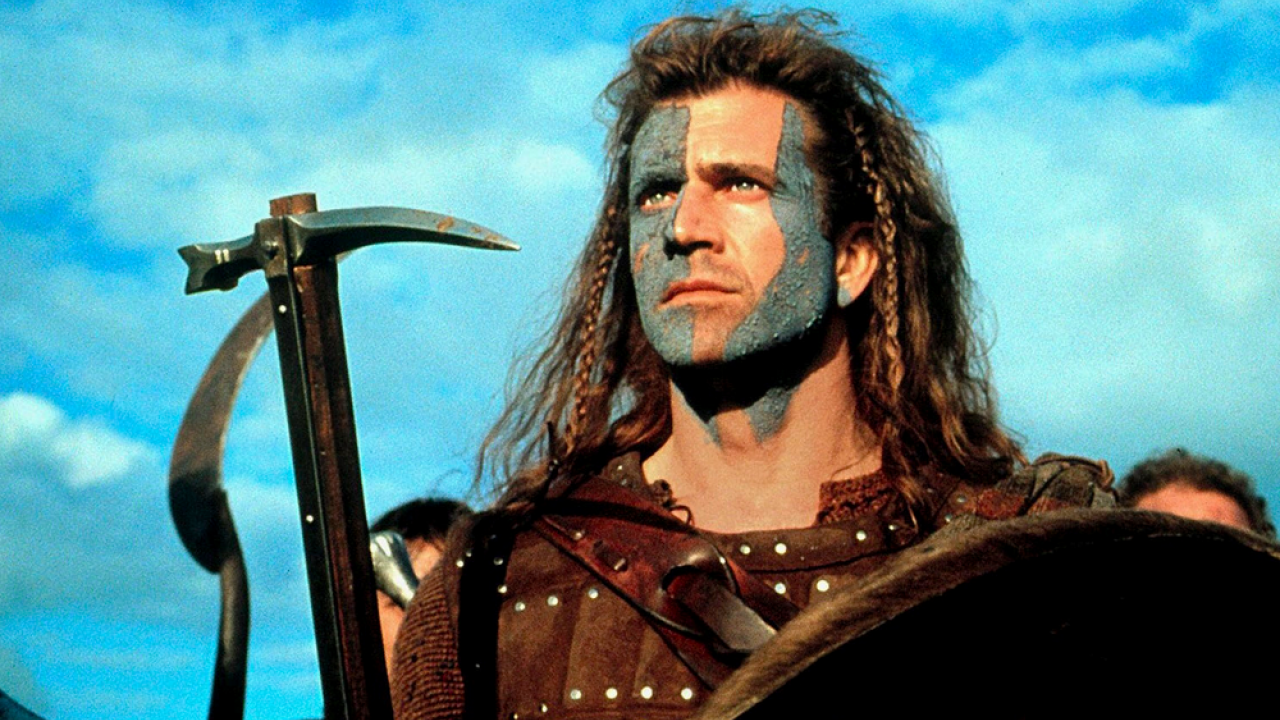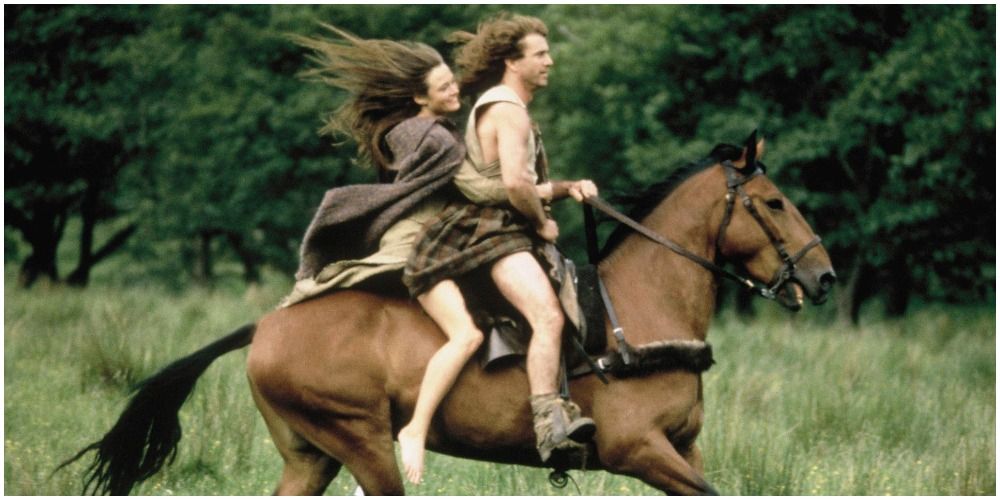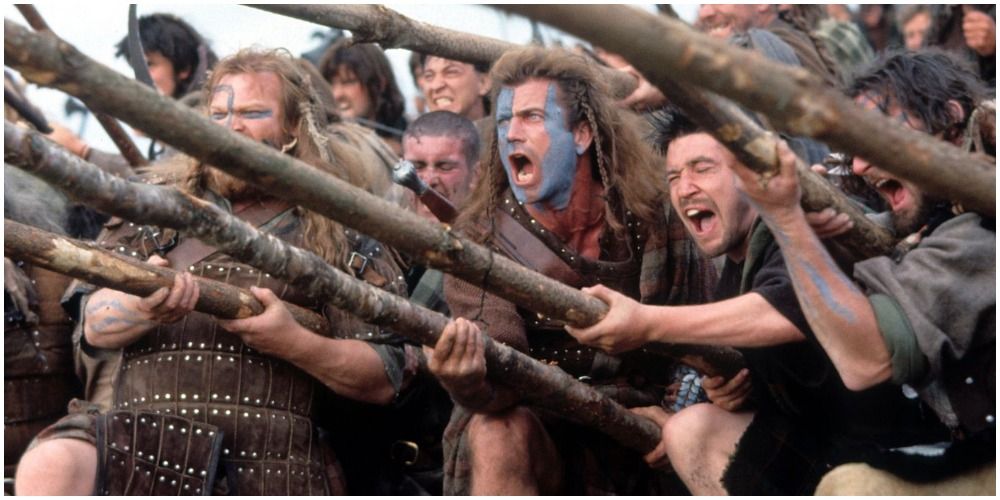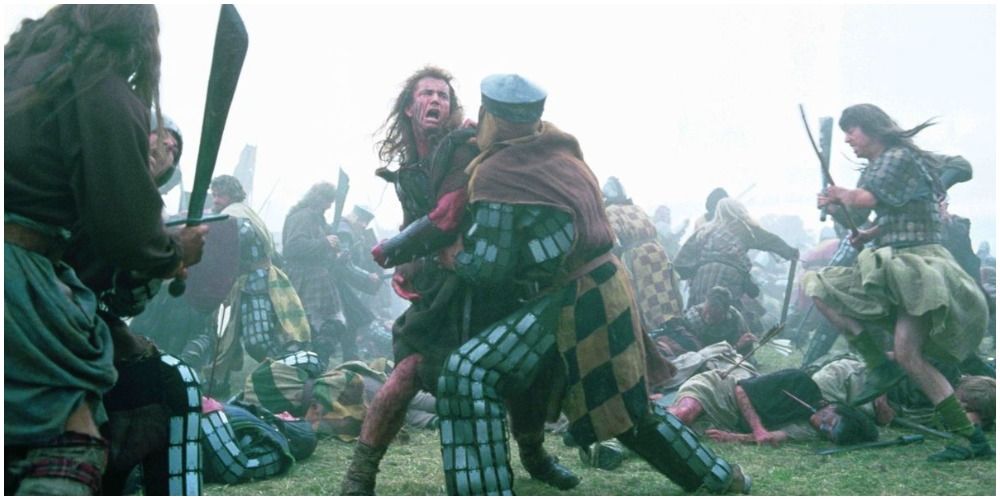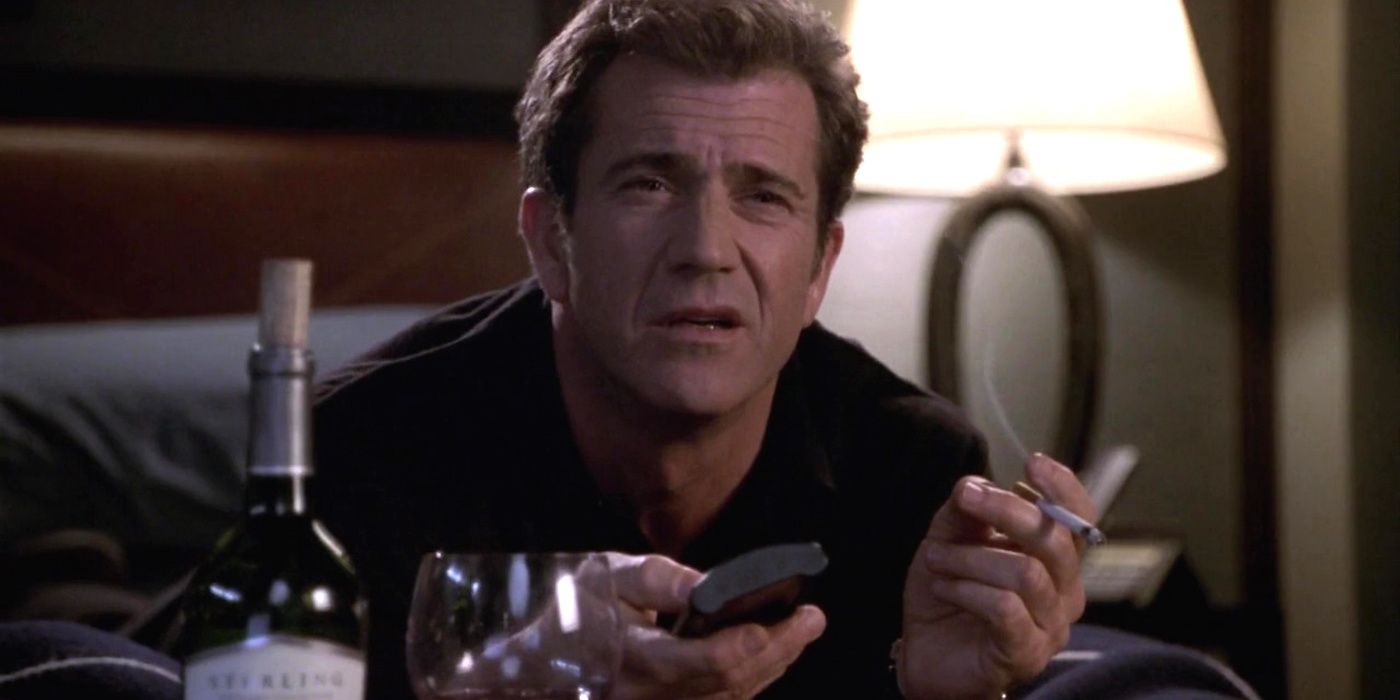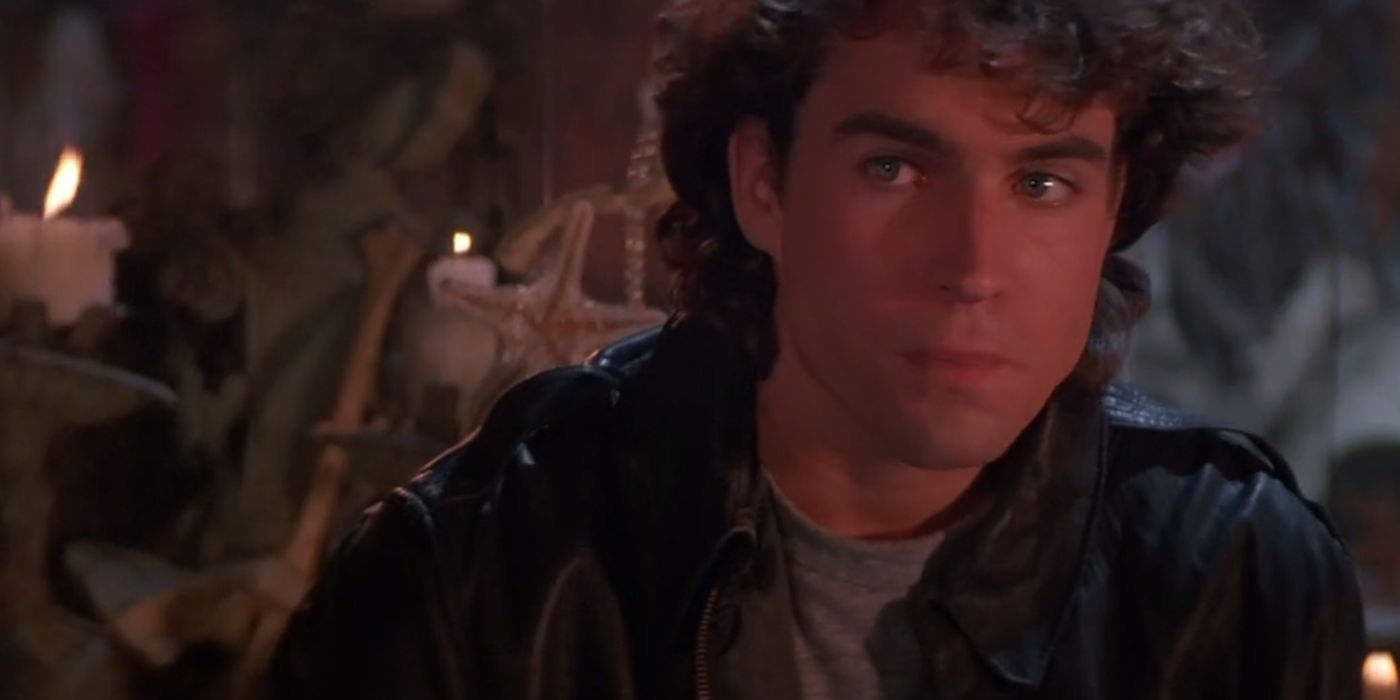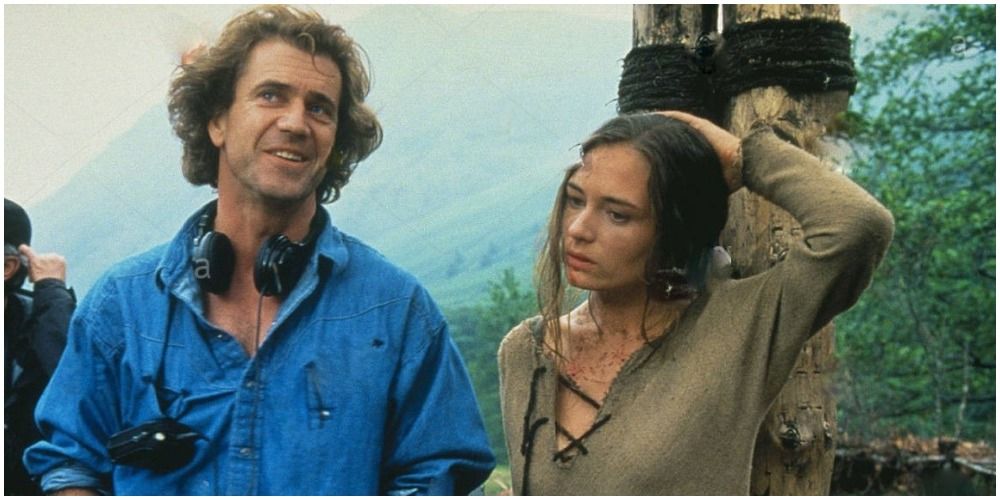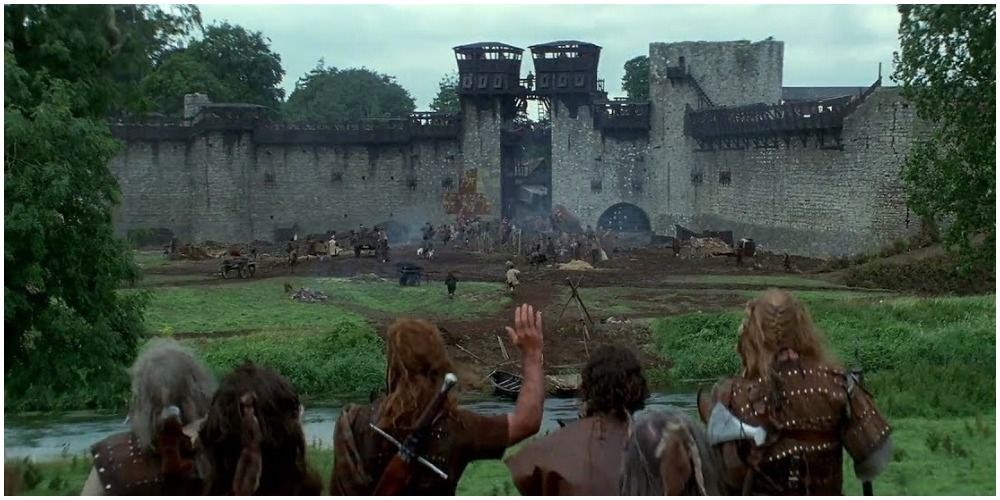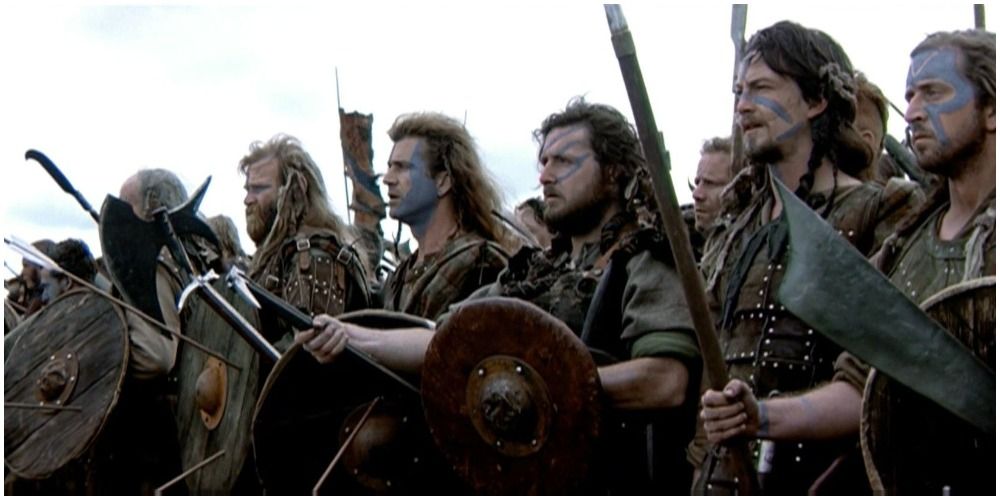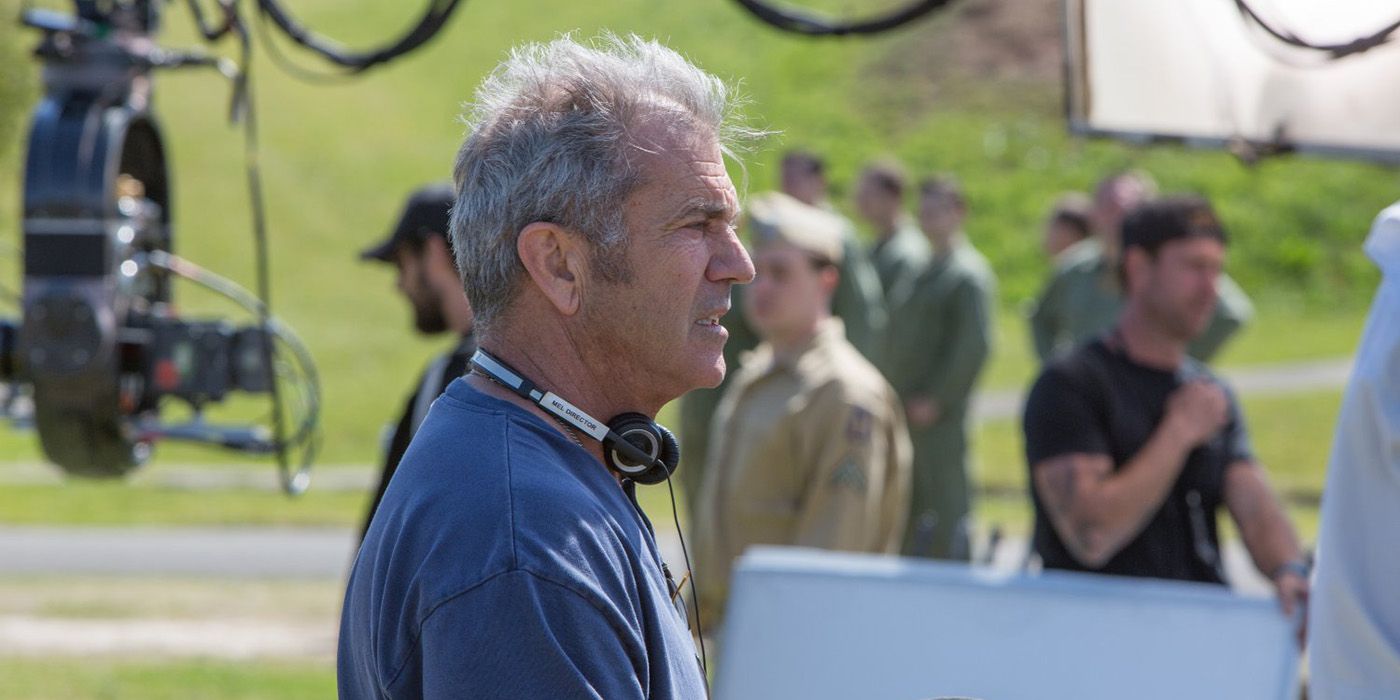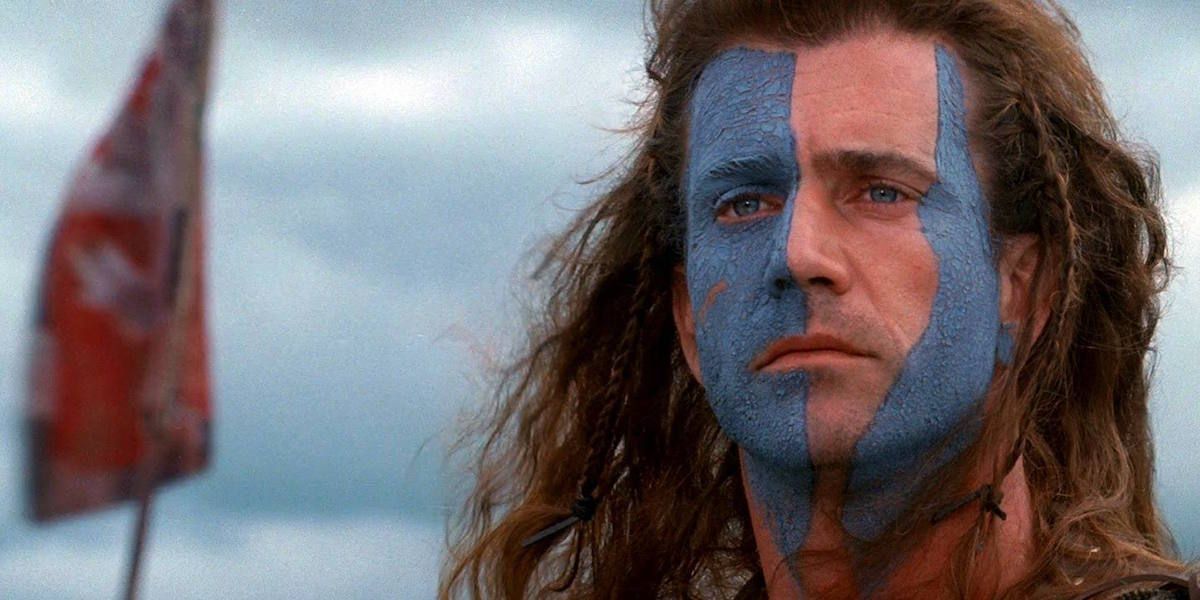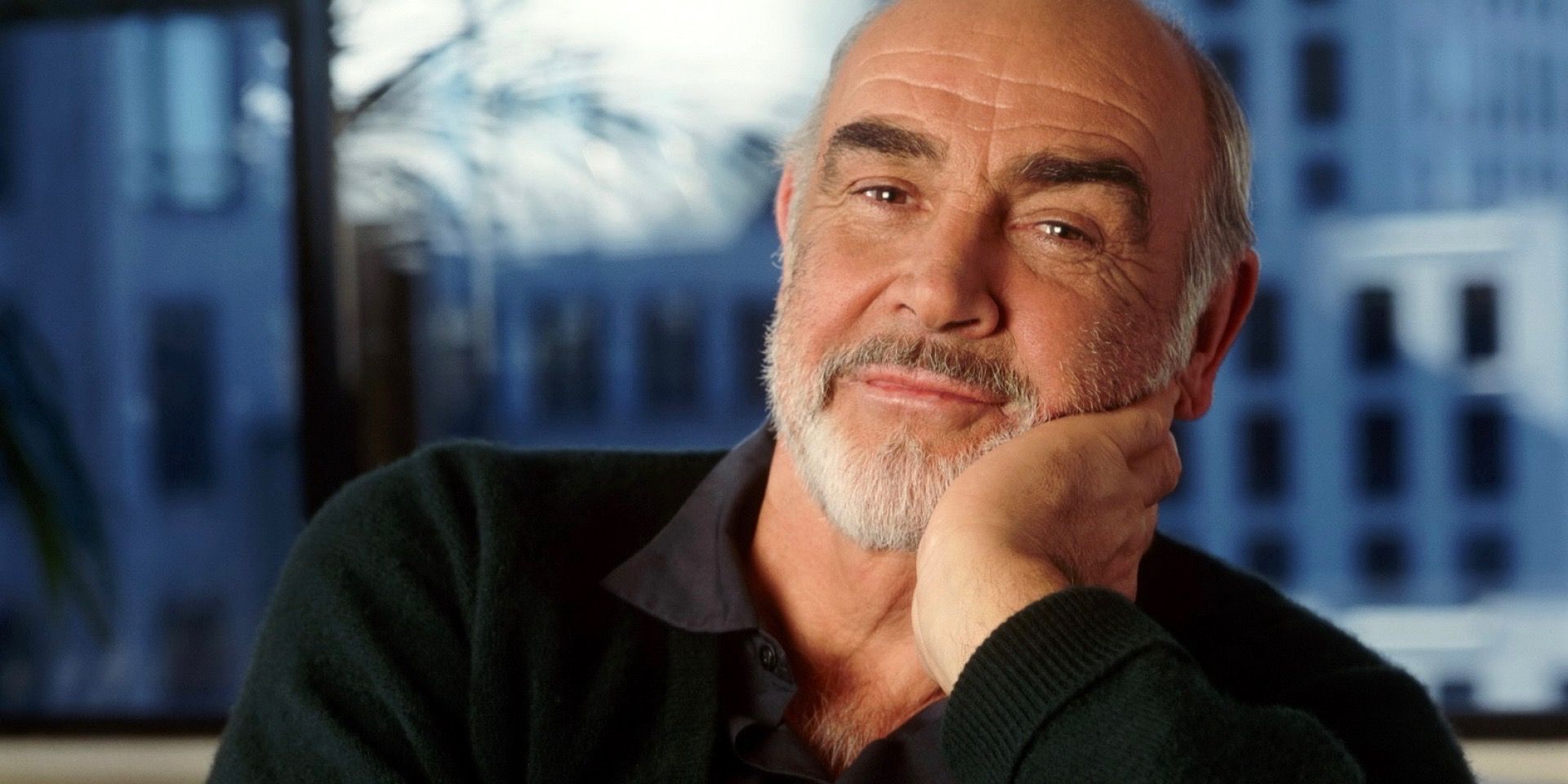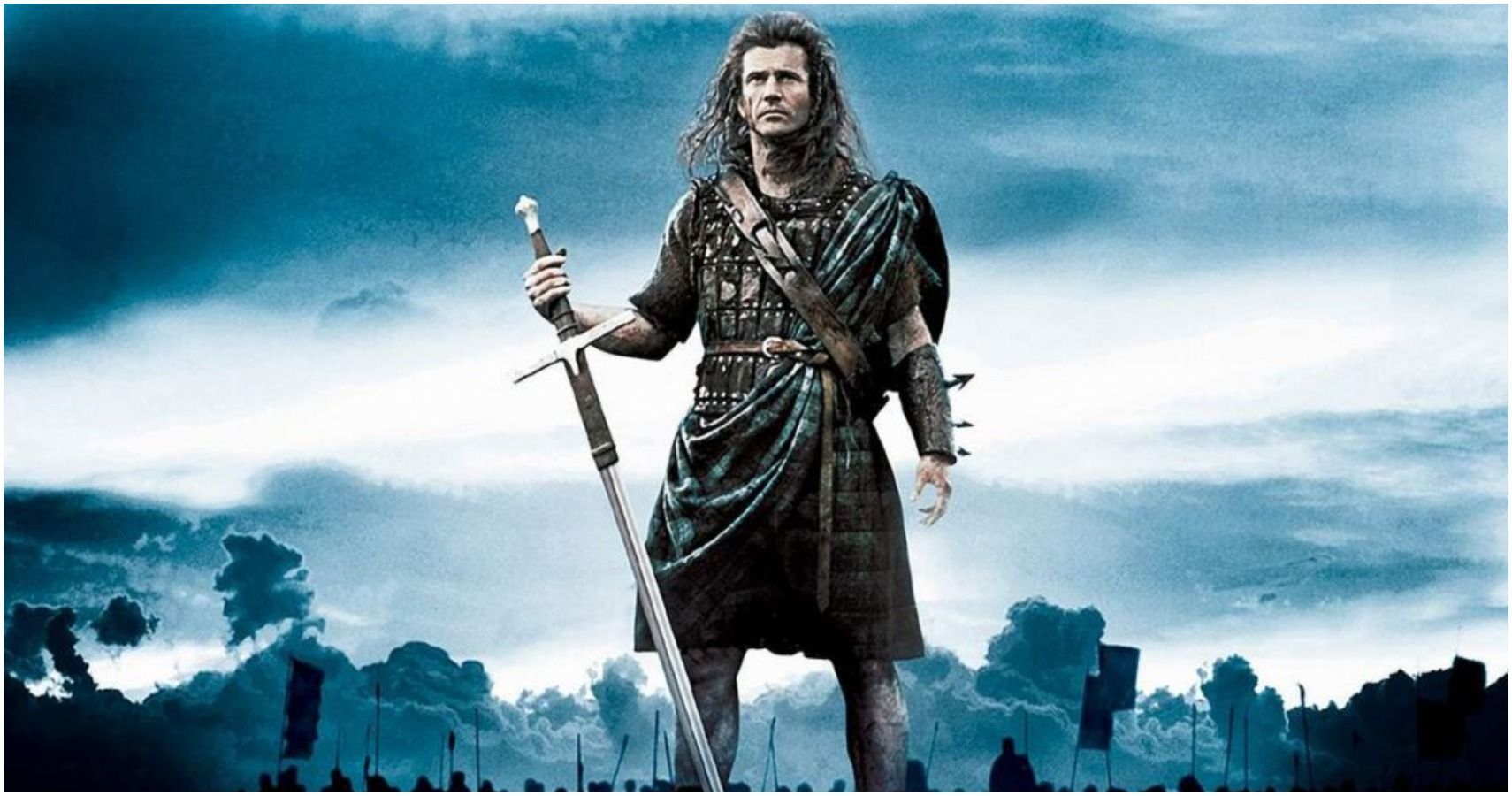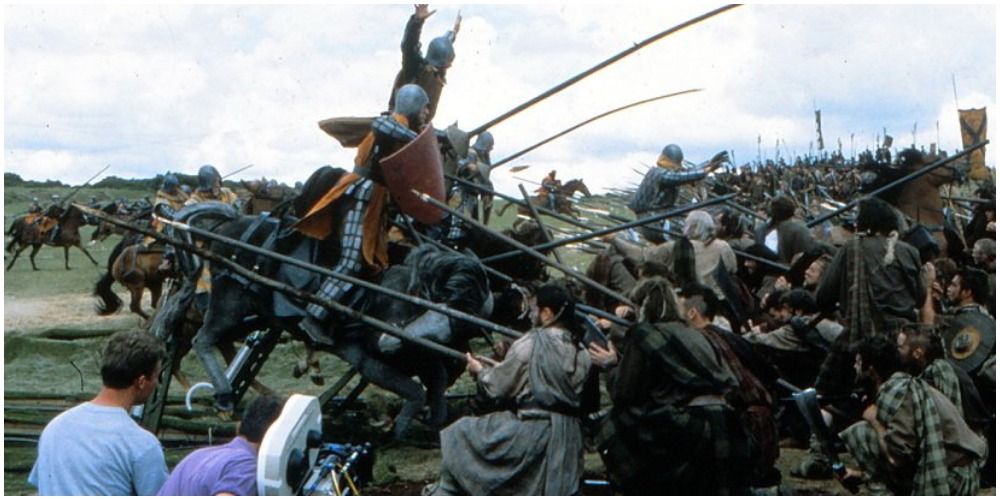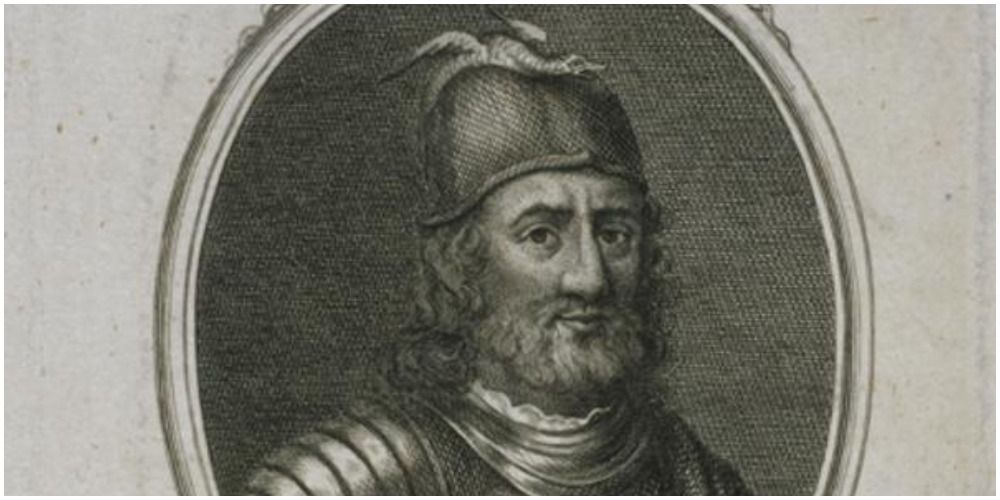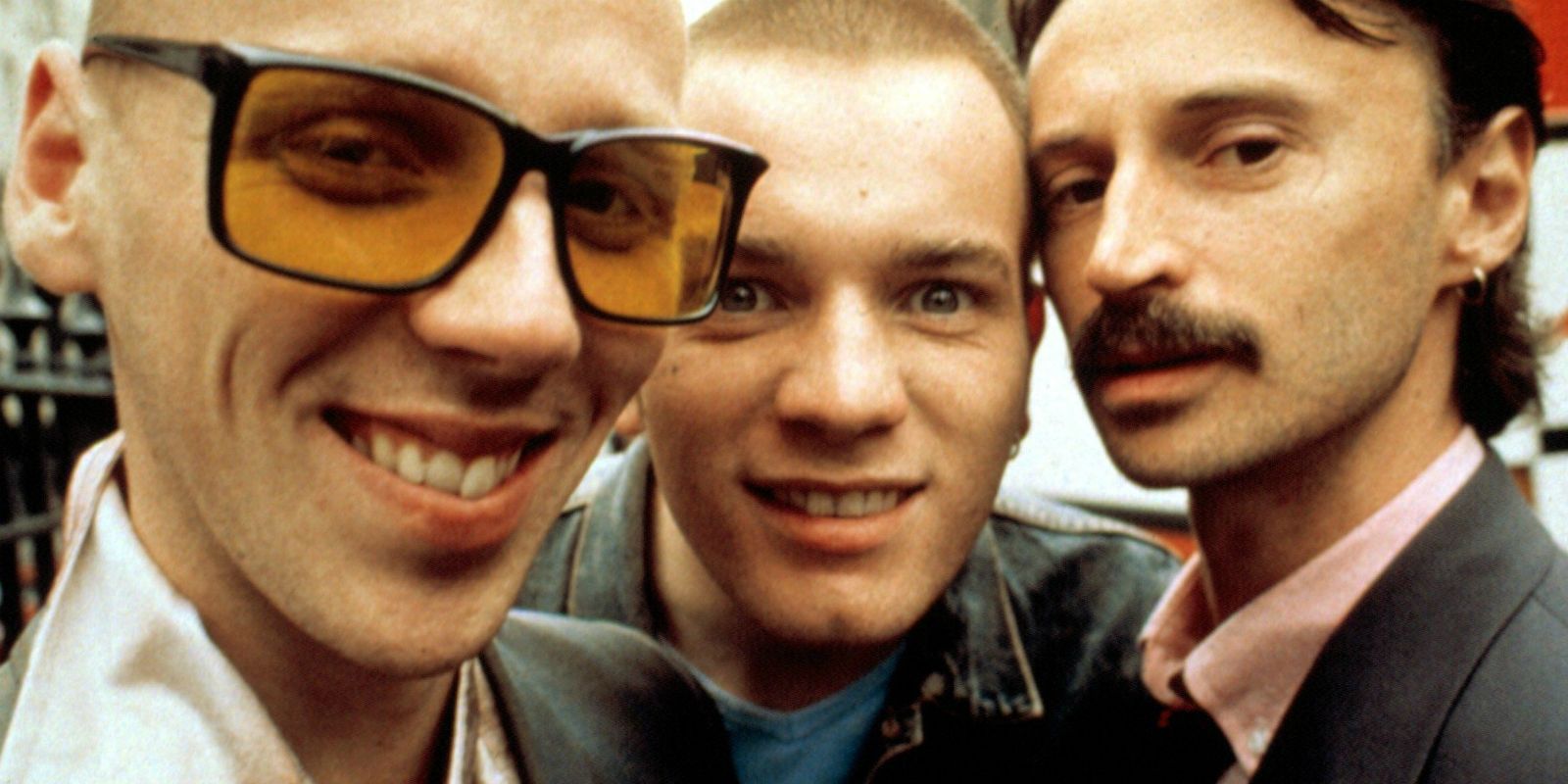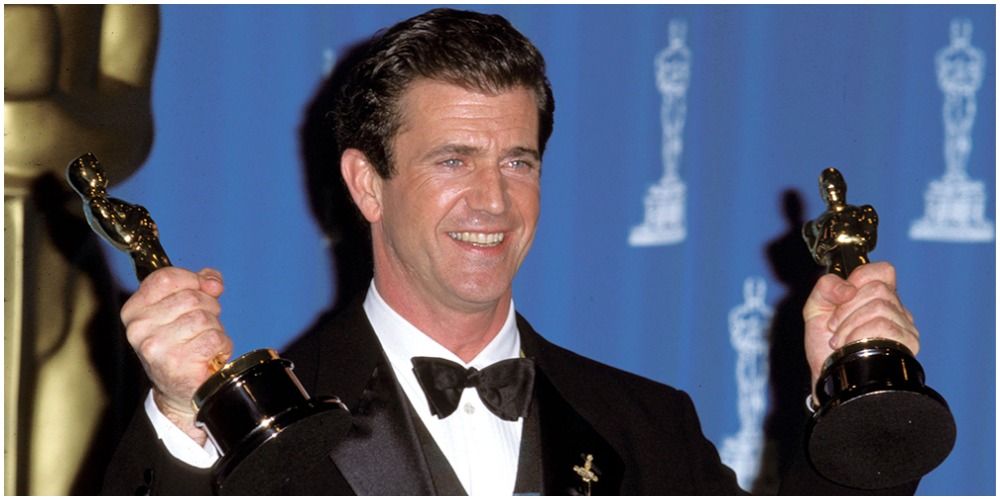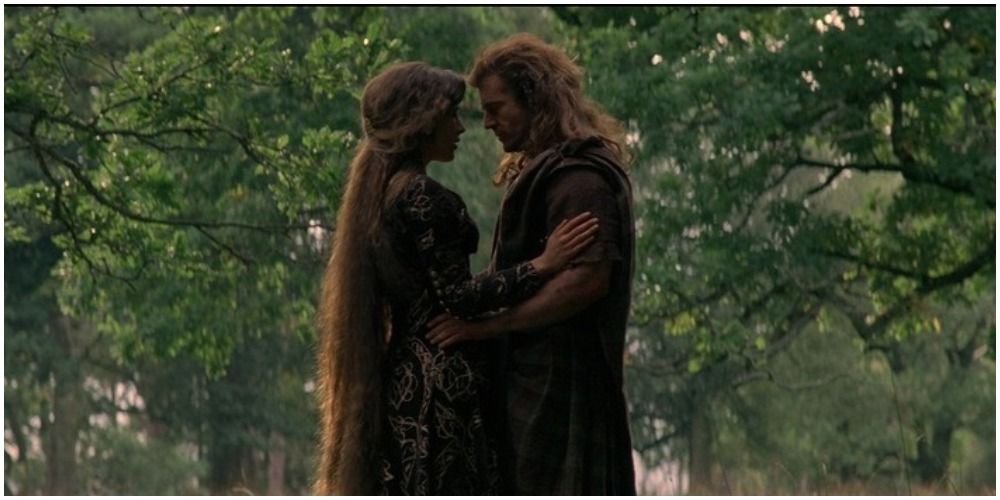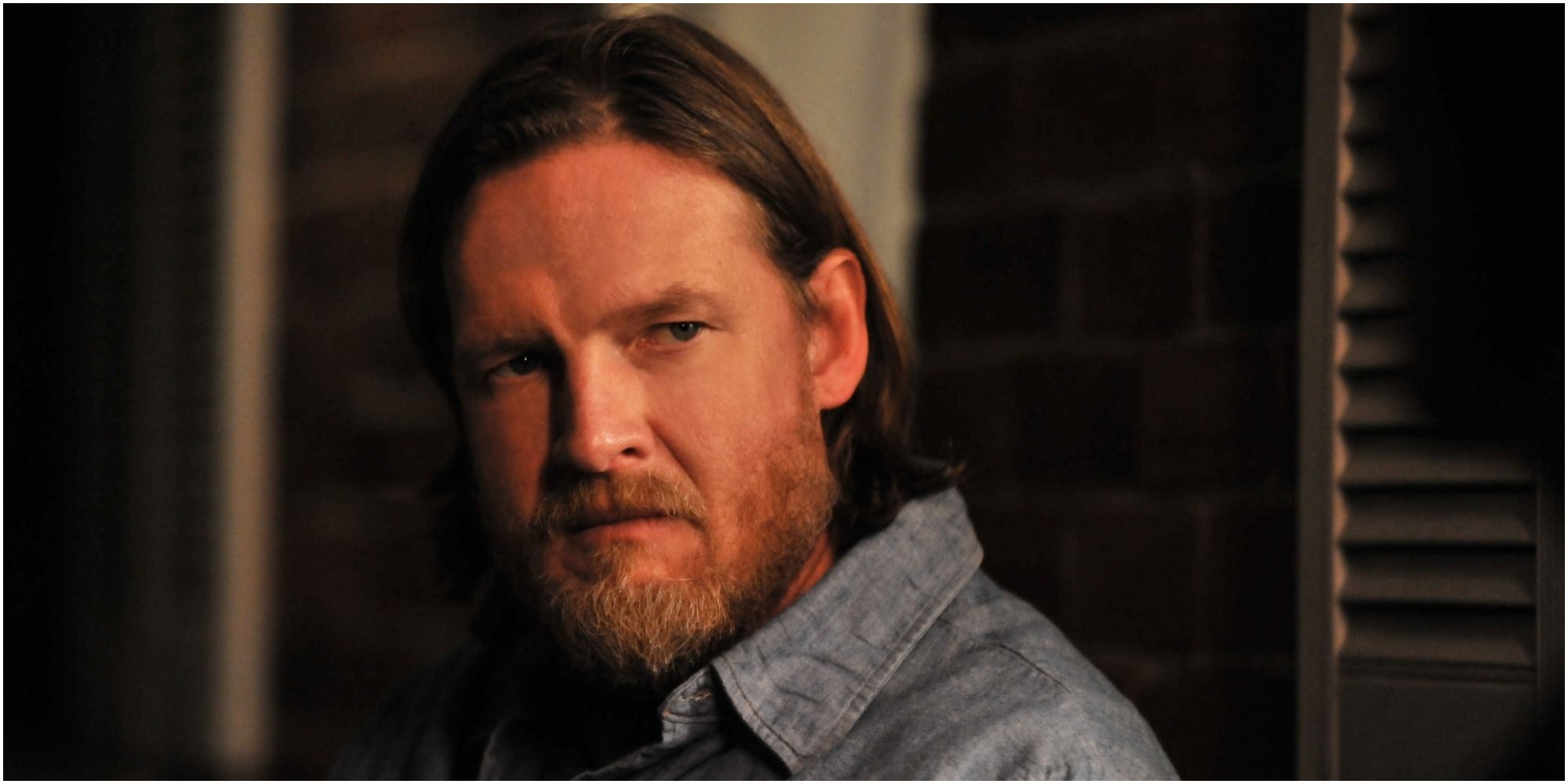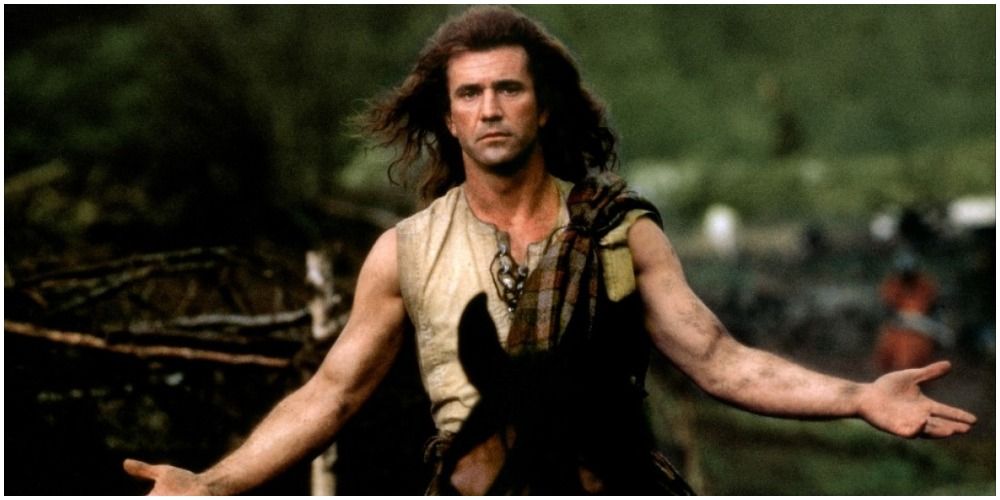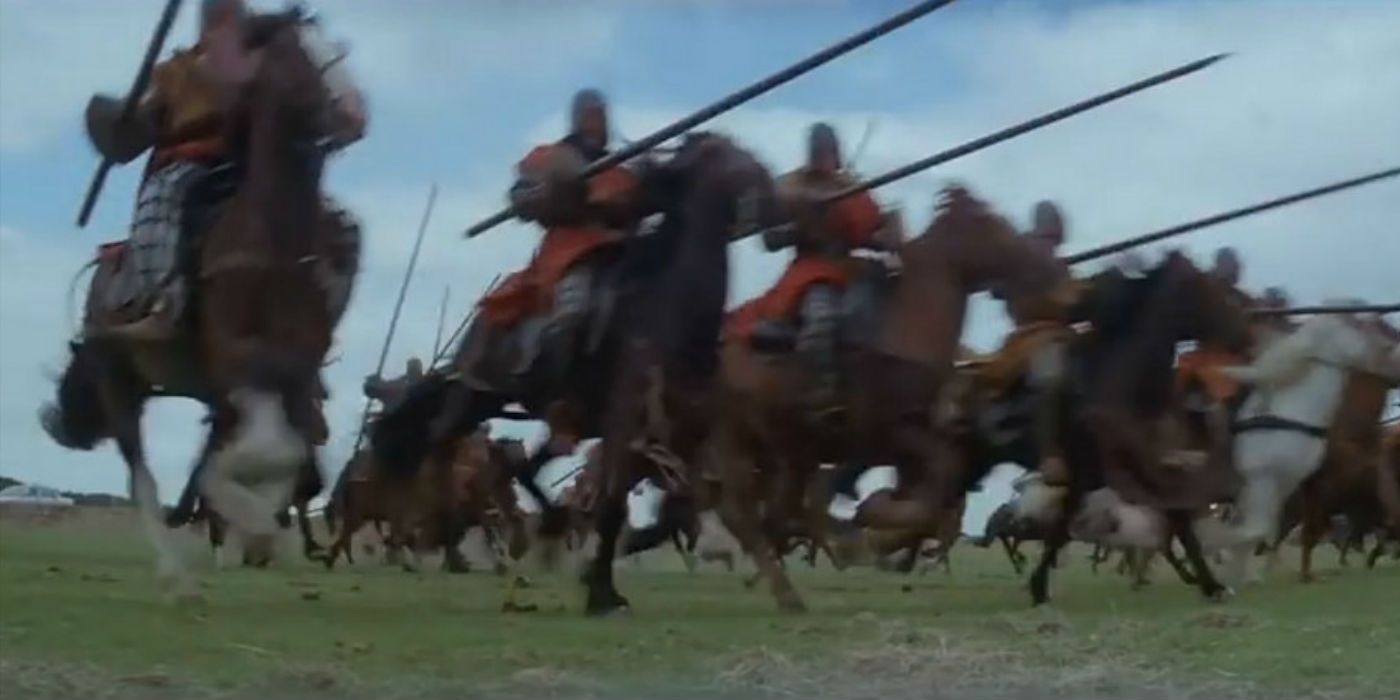Braveheart was a movie released in 1995 that told the story of Sir William Wallace - a knight from Scotland who was a key figure in the first war of the independence of Scotland. The screenplay was written by Randall Wallace, who based it on the poem called The Actes and Deidis of the Illustre and Vallyeant Campioun Schir William Wallace, which was a romanticized retelling of the life of William Wallace.
The script for Braveheart landed on the desk of Mel Gibson, who turned the movie into a personal passion project. There was a lot of doubt from the studios that there was a profit to be made in war epics that happened in Scotland, but Gibson proved them all wrong by bringing in over two-hundred and ten million dollars at the box office. Braveheart would go on to win five Academy Awards, with Gibson earning one for Best Director.
Braveheart had a huge influence on Scotland, with the film being cited as the reason for a huge spike in tourism to the country. There are many people around the world who still carry surnames from Scotland and Braveheart had the power to draw them back home.
There was a lot of drama going on behind-the-scenes of Braveheart, however, with Mel Gibson personally going to bat for the movie on many occasions. If it weren't for Gibson's passion for the movie, Braveheart may never have been made.
We are here today to learn the secrets behind the production of Braveheart - from the numerous historical inaccuracies that plagued its story to the modern vehicle that showed up for a cavalry charge.
Here are the 20 Wild Details Behind The Making Of Braveheart!
20. Mel Gibson Was Almost Crushed By A Horse During Filming
Horses were such an important aspect of warfare before World War I that it's impossible to make historical films without their inclusion. This is especially true of movies that deal with warfare, due to how important that mounted cavalry was for many armies throughout history. The problem with using horses during filmmaking is that they can be dangerous animals, regardless of how well they are trained. Mel Gibson almost suffered a terrible injury on the set of Braveheart when his horse nearly crushed him.
It was during a scene where he had fallen off the horse and it reared up in surprise. The problem was that the horse turned the wrong way and almost landed on Gibson.
It was only due to the fact that his stunt double rushed in and pulled him to safety that Mel Gibson escaped without injury.
19. Mel Gibson Knew That The Movie Wasn't Going To Be Historically Accurate
Braveheart is about as historically accurate as The Flintstones in Viva Rock Vegas. Put simply, Braveheart is essentially Mel Gibson's William Wallace fan fiction. These changes range from William Wallace being much younger during the events of the story, the idea of William Wallace impregnating Isabella of France when she was young during the Battle of Falkirk, and the Battle of Stirling Bridge not actually featuring a bridge.
Mel Gibson commented on the historical accuracies of Braveheart during the DVD commentary and confirmed that he was aware of them going into production, but decided that he wanted the movie to be "cinematically compelling" rather than strictly following the events of history.
18. There Were False News Reports Spread About Major Accidents On The Set
Braveheart features a lot of battle scenes and violent moments, but the cast managed to avoid any serious injuries. Mel Gibson claims that there were only a few sprained ankles and broken noses caused on the set of the movie. The violent nature of the film meant that a lot of care was given to safety procedures, which was likely helped by the disciplined extras who the producers had available for the battle scenes.
Mel Gibson makes a cryptic remark in one of the behind-the-scenes documentaries, where he claims that fake news reports from during the time of production said that five-hundred people were sent to the hospital. Gibson claims that these stories were planted by "detractors," though he doesn't elaborate on who these people might be.
17. Mel Gibson Struggled To Find Funding
There was a time when Mel Gibson was one of the biggest box office draws in the world. He starred in huge hits, like the Mad Max and Lethal Weapon series, which helped to make him a household name. It seems that there are limits to what star power can achieve when it comes to finding money to make a movie, as Mel Gibson had a tremendous amount of trouble finding the funding for Braveheart.
Mel Gibson originally approached Warner Bors. for funding for Braveheart and they told him that they would only finance the movie if he agreed to star in another Lethal Weapon movie.
Braveheart would eventually be financed and distributed by a collaboration between 20th Century Fox and Paramount, though they also had caveats in order for money to exchange hands...
16. The Original Choice For The Role Of William Wallace Was Jason Patric
One of the major historical inaccuracies in Braveheart was the age of William Wallace, or rather, the age of the actor who was playing him. The most important deeds of William Wallace that were shown on film were events that transpired during his late twenties, while Mel Gibson was in his late thirties when he portrayed the character. This was one of the reasons why Gibson didn't want to star in the film.
Mel Gibson had originally wanted Jason Patric to star in the movie, as he was closer to William Wallace's age. It was due to the difficulties in finding financing that Mel Gibson was forced to take on the starring role in Braveheart, while also acting as the director of the film.
15. Mel Gibson Was Originally Only Going To Direct
Mel Gibson is almost as famous for his directorial work as he is for his acting. The first movie directed by Gibson was The Man without a Face, which was followed by Braveheart. He would go on to direct The Passion of the Christ, which was a huge hit (despite its controversial subject matter) and brought in over six-hundred million dollars at the box office.
When Mel Gibson read the script of Braveheart, he decided that he wanted to direct the movie and stay behind the camera, rather than having any significant role in the cast. It was only due to issues with funding that Mel Gibson was forced to take on the starring role as well, as that was the only way he was going to get his passion project off the ground.
14. The Movie Was Mostly Filmed In Ireland Instead Of Scotland
Braveheart may be the most obvious movie from Scotland ever made, but it was mostly filmed in Ireland. The crew only spent six weeks filming Braveheart in Scotland, before packing up and moving to Trim, County Meath in the Republic of Ireland, which is also famous for acting as the setting of the infamous cult classic Fatal Deviation - Ireland's only kung-fu movie.
The production of Braveheart was moved to Ireland due to significant tax breaks, as the money situation was already too tight for what Mel Gibson was trying to achieve on film.
This is also why a lot of Game of Thrones is filmed in Ireland. Trim is home to Trim Castle, which is a ruined fortress that was repurposed for several different locations in the movie. The Republic of Ireland also offered to help the production of Braveheart in the form of soldiers.
13. The Irish Reserve Played Both The English & Scottish Armies
In order to film the large-scale battle scenes in Braveheart, Mel Gibson needed wide-open areas of countryside, along with lots of extras who could be used to represent an entire army, as well as facilities for the horses that were used for the mounted cavalry.
The production of Braveheart was given the use of Curragh Camp, which is an army barracks in County Kildare. They were able to use the firing range for the battle scenes and members of the reserve for acting roles. This meant that Mel Gibson had access to large groups of disciplined soldiers who could take direction and could be thrown into different costumes each day in order to portray different armies. There was also a huge racetrack nearby that could be used to house all of the horses that were used in the production.
12. Mel Gibson Has Admitted That He Acted Like "The Antichrist" During Budget Negotiations & Production
Mel Gibson's temper cost him his career for almost a decade, as footage of him shouting offensive expletives has been released to the public on two different occasions. There were instances during the production of Braveheart where Mel Gibson admitted that he had acted like "the Antichrist" and snapped on other people who were working on the movie. This happened on at least three different occasions during production, which was likely due to the stress he was under while filling so many pivotal roles on the set at once.
Mel Gibson also flipped out during budget negotiations with Bill Bernstein, who was representing 20th Century Fox. Bernstein wasn't offering enough money to cover the filming of the battle scenes, yet was expecting a quarter of the cut of the film's theatrical run. This demand infuriated Gibson to the point that he threw a glass ashtray at the wall.
11. The Movie Was Going To Be Much Longer & There Is An Hour Of Unseen Footage
Braveheart is almost three hours long, with almost exactly the same running time as The Lord of the Rings: The Fellowship of the Ring. The movie was already under pressure to keep the running time low when it was being edited, as longer films have the potential to earn less money due to having fewer showings during their theatrical run. The Lord of the Rings movies were still a few years off, so Mel Gibson had to cut the film down.
The original assembly cut of Braveheart was three hours and forty-five minutes long, but Mel Gibson has revealed that there is still an hour of footage that hasn't been included on any home release of the movie.
It's likely that we will see this unseen Braveheart footage on some special edition in the future, but it's all locked in some vault for the time being.
10. Sean Connery Helped Mel Gibson With His Accent
The people of Scotland are always wary of attempts to replicate their accent on the big screen by foreign actors. The blame for this can be put on the shoulders of James Doohan, who was the actor from Canada who played Montgomery Scott in Star Trek: The Original Series, as his awful attempt at recreating the accent of Scotland was considered to be sandpaper to the ears of many residents of Scotland.
Mel Gibson received a lot of scorn for his attempt at an accent in Braveheart, even though the film is otherwise loved in Scotland. William Wallace's accent could have been much worse, as Mel Gibson revealed that his accent was helped tremendously during a dinner with Sean Connery. It was hearing Connery's pronunciation of the word "goulash" that helped Gibson get his head around the accent.
9. The Violent Scenes Had To Be Toned Down In Order To Avoid An NC-17 Rating
Braveheart was rated R upon release due to the extreme levels of violence throughout the film (most notably during the battle scenes) and the many scenes where men and women expose themselves - most notably during a scene where the soldiers from Scotland lift their kilts in order to taunt the enemy.
The content in Braveheart could have been much worse, as the movie had to be edited in order to escape the dreaded NC-17 rating. This meant that Mel Gibson had to tone down the violence during the battle scenes and change the focus of William Wallace's execution so that we see his face instead of the injuries that are being inflicted upon him. It's possible that we may see this cut content on the same future edition that includes the hour of lost footage.
8. The Horses That Were Used To Charge Into Enemy Lines Were Mechanical
A lot of care is given to animal welfare on the set of movies, especially when it comes to horses, due to how easy it is for them to injure themselves or others. If animals are harmed on the set of a movie, it can lead to a ton of bad press, as was the case with The Hobbit movies. Braveheart used a lot of horses throughout the movie, many of which appeared during battle scenes. These battles include moments where horses crash into enemy lines and right into spears.
The horses used for these crashes where actually mechanical and were placed on a moveable track that ended with a spring, so that the fake horses would look like they were leaping at the last moment.
The bulk of the cavalry was made up of real horses, but they stopped long before they reached the spears, as the focus shifted to the fake ones that were closer to the camera.
7. Members Of The Wallace Clan Played Parts
The clans of Scotland are not necessarily related by blood, as the surnames they shared were meant to reflect the region where they came from. These clan names can be found all across the world and the Internet has helped many people who descended from Scotland to learn more about their heritage. The Wallace clan continues on to this day, though William Wallace is still their most famous member.
It was during the location shoots in Scotland that members of the Wallace clan appeared as extras during some of the scenes in Braveheart. Mel Gibson said that they showed up wearing the official tartan colors of the clan. This was despite the fact that kilts wouldn't become a thing in Scotland for another three-hundred years or so, but that's a minor complaint compared to some of the other historical inaccuracies in the movie.
6. Most Of The Movie Wasn't Made In Scotland Because It Wasn't "People Friendly"
The majority of Braveheart may have been shot in Ireland, but it was really Scotland that benefited the most from the movie. Braveheart's influence led to a huge boost to the tourism industry of Scotland, as well as an increased interest in its history and politics. The people weren't so friendly to the production of Braveheart as it was happening, as Mel Gibson described the country as being neither horse-friendly nor people-friendly.
One of the reasons why Mel Gibson made this statement was due to the resistance he felt from the local authorities when making Braveheart. This was contrasted by the Irish Minister of Arts, who fought hard for the production to be moved and for everything to go as smoothly as possible.
5. There Are A Lot Of Out-Of-Focus Shots (But This Didn't Stop It From Winning An Academy Award For Cinematography)
Braveheart faced many difficulties during its production. One of these was the fact that many of the film's scenes took place outside, which meant that it took longer than normal to set up any kind of lighting. The rain (or lack of rain) caused several continuity flubs in Braveheart, as there are scenes where the ground goes from dry to wet within a matter of seconds.
There are also a lot of problems with focusing, as there are several shots in the movie that are clearly out of focus.
This was due to the hectic pace of the fighting scenes, which meant that it was difficult for the shots to come out in the way that the producers expected. These mistakes didn't stop Braveheart for winning an Academy Award for its cinematography, however, which was likely due to all of the amazing shots that did appear in the film, which made up for the few bad ones.
4. The Scenes Filmed In Scotland Endured Constant Rainfall
Scotland is a very rainy place. The west coast of Scotland actually has one of the highest precipitation levels in Europe, with an average of two-hundred and fifty rainy days a year. The production of Braveheart was plagued with rain, and continuity issues that came along with it.
The producers actually brought fire hoses along in order to make it rain during the few instances where it wasn't actually raining, so the cast was drenched throughout the six weeks of production that took place in Scotland. The tax breaks and use of an army was likely a tantalizing prospect for the production of Braveheart, but they were probably just happy to get out of the rain.
3. Mel Gibson's Younger Brother Played A Scottish Nobleman
Donal Gibson is Mel Gibson's younger brother. The two of them have appeared in the same movies, such as Conspiracy Theory and Maverick. Donal has also had roles in movies like The Punisher and Paparazzi. Donal Gibson is probably best-known for his voice-over work, as he appeared in cartoons like ReBoot, Justice League Unlimited, and The Wild Thornberrys. He also took over his brother's former role as Captain John Smith in Pocahontas II: Journey to a New World.
The amount of creative control that Mel Gibson had over Braveheart meant that it was easy for him to get his brother a role in the movie. Donal Gibson appeared as one of the Scottish noblemen who joins William Wallace's cause.
2. Mel Gibson Lost Fifteen Pounds During Production
Mel Gibson has said that his memories of the production of Braveheart are hazy, due to how hectic they were for him on a personal level. He took several months out of his life in order to star in a movie where he appeared in most of the scenes, while also acting as a director and one of the main producers.
The workload of Braveheart was so hectic that Mel Gibson actually lost fifteen pounds over the course of the movie, despite the fact that he would gorge on food.
He put a lot of energy into making Braveheart and his passion for the film can be clearly seen in the behind-the-scenes footage taken during the production process, which is why he lost so much weight over such a short period of time.
1. There Is A Jeep In The Background Of One Of The Battle Scenes
It's common for movies set in ancient times to feature anachronisms and Braveheart is a huge offender in this regard. It's one thing to include soldiers from Scotland wearing kilts, due to how closely that piece of clothing is associated with Scotland, but it's a major error to leave a car in the background of a shot during the Battle of Stirling Bridge.
This is the kind of error that you likely wouldn't notice unless someone pointed it out to you. It happens during the moment when the cavalry of England charges into the lines at the start of the battle, which is one of the most exciting moments in the movie, so you'll likely be caught up in the action. Once the truth has been pointed out to you, it's hard not to notice the large white jeep that is parked in the distance during the cavalry charge. This error has since become one of the most infamous movie mistakes in cinema history.
---
Are there any other interesting secrets behind the making of Braveheart? Let us know in the comments!

